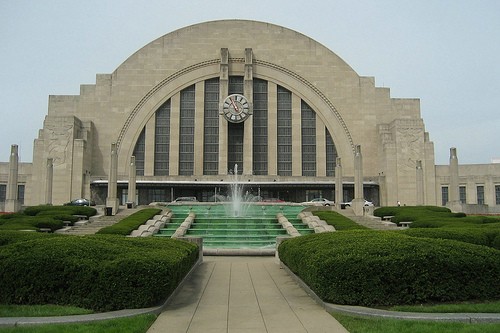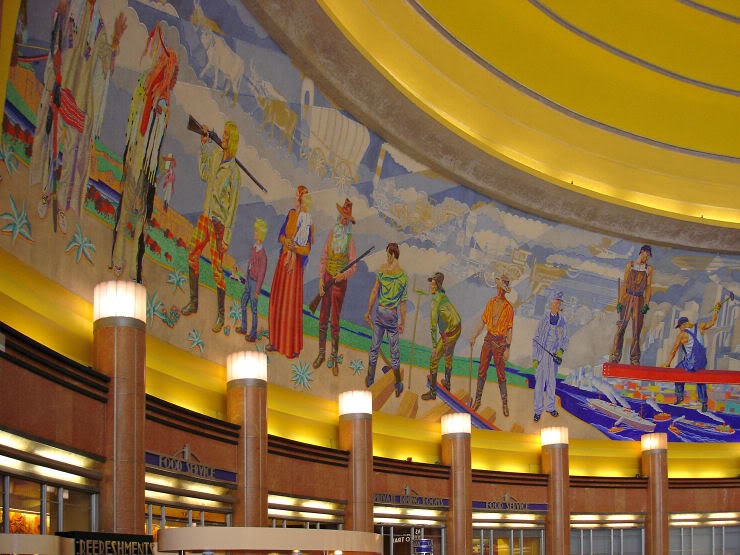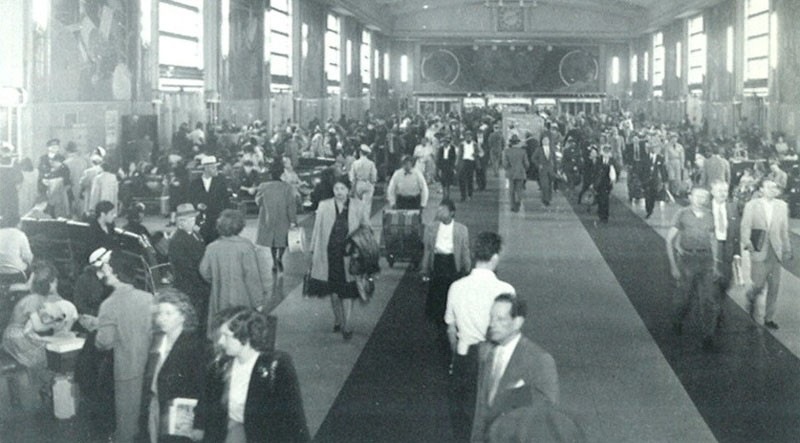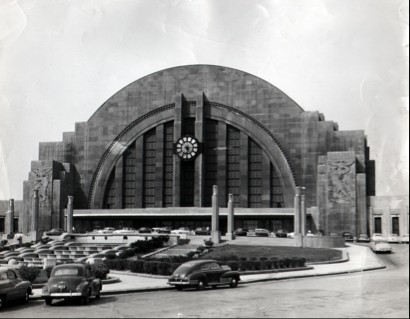Cincinnati Union Terminal and Cincinnati Museum Center
Introduction
Text-to-speech Audio
Images
Cincinnati Union Terminal- Art Deco Masterpiece

A small part of the mosaics that line the rotunda.


The terminals concourse

Early photo of the construction of the terminal

Early photo of the terminal, circa 1950s-1960s

Backstory and Context
Text-to-speech Audio
Officially opened on March 31, 1933, Cincinnati Union Terminal has long been regarded as one of the most influential Art Deco buildings in America. The planning and original concept for the building began in 1926, with George Dent Crabbs negotiating with the seven other railroad companies that each ran through the city. In 1927, each company agreed to support the construction of a single structure connecting each of their railroads. As a result, work began in planning this terminal to connect the Pennsylvania Railroad, Baltimore & Ohio Railroad, New York Central Railroad, Louisville & Nashville Railroad, Chesapeake & Ohio Railroad, Norfolk & Western Railroad and Cincinnati Southern Railway Company.
George Dent Crabbs chose the New York architectural firm, Fellheimer and Wagner to design the building and the French architect Paul Cret to provide the Art Deco elements. This duo created the signature structure of the city of Cincinnati. In 1929 construction began and the cornerstone was laid on November 20, 1931 with a ceremony.
The building became the second largest half-dome structure in the world, second only to the Sydney Opera House in Australia. The building's design is representative of the transportation industry at the time, emphasizing both sleek and grandiose designs to demonstrate both the speed and the luxury of traveling by train. The station also included fourteen different murals by Winold Reiss that depicted the history of transportation, local industries, and westward expansion. Several shops and other luxurious amenities were located all throughout the station.
In 1937 a devastating flood stopped all but two of the railroad companies, Chesapeake & Ohio and Cincinnati Southern Railway from using the terminal. The damage was significant throughout the region, but the city and the terminal recovered and this was a central terminus for many soldiers in World War II.
When the station was first constructed, it was designed to accommodate up to 216 trains a day. During its first year, the station accommodated about 150 trains a day and it only reached maximum capacity during WWII. However, by the late 1950s traffic was down to 51 trains a day as more people traveled by bus and personal automobile. By 1962, the station only saw an average of 24 trains due to the expansion of superhighways and automobiles. The station closed in 1972 and the building became a shopping center in 1980. However, the shopping center was short-lived and for many years the building was underutilized and some feared it might eventually be demolished unless it could be repurposed.
In 1990, the building opened as the home of the Cincinnati Historical Society and the Cincinnati Museum of Natural History. In 1998, these two museums were joined by a children's museum. Amtrak began using the depot in 1991 as part of their Cardinal Line. The building was completely restored and renovated between 2016 and 2018.
Sources
Ohio SP Cincinnati Union Terminal, National Register of Historic Places Nomination Form, Department of the Interior. National Park Service. National Archives. Accessed December 28th 2019. https://catalog.archives.gov/id/71989027.
